Home > Archives for Bernd > Page 2
In early January 2022, Kazakhstan was rocked by a series of popular protests in Almaty and the capital Nur-Sultan. The protests followed a government decision to withdraw subsidies on the price of liquefied natural gas (LNG), which significantly increased prices[1]. The protests turned into riots, requiring the intervention of Kazakh law enforcement and CSTO (Collective Security Treaty Organisation) member countries, with the support of China[2].
As a neighbour, partner and ally of both Russia and China[3]Kazakhstan is indeed a member of the CSTO, created in 1992, composed of Russia, Belarus, Armenia, Kyrgyzstan and Tajikistan[4]. Like its Chinese and Russian neighbours, Kazakhstan is a member of the Shanghai Cooperation Organisation and therefore also remains a concern for Beijing. For Moscow, the objective is the restoration of order in the country and regional stability[5]. The strategic position of the country - proximity to Afghanistan, presence of the Baikonur cosmodrome with its Russian rockets and satellites, transit country for the Silk Road - represents one of the main reasons for the intervention of the CSTO and for the Chinese support to the government of Nur-Sultan[6].
Kazakhstan's resources
In addition, Kazakhstan has many resources other than oil and gas[7]. Indeed, the country is the world leader with about 40% of uranium production in 2017, of which it has the second largest global reserves - estimated at about one billion tonnes[8]. As for chromium deposits, Kazakhstan ranks first in the world with one third of the total exploitable, while for lead and zinc, it ranks sixth with 5 % of the world's deposits[9]. For iron, manganese, copper, tungsten, bauxite, tin, coal, cobalt, titanium, gold, molybdenum, metals used by high-tech industries, the "proven" reserves still rank the country in the top ten worldwide[10].
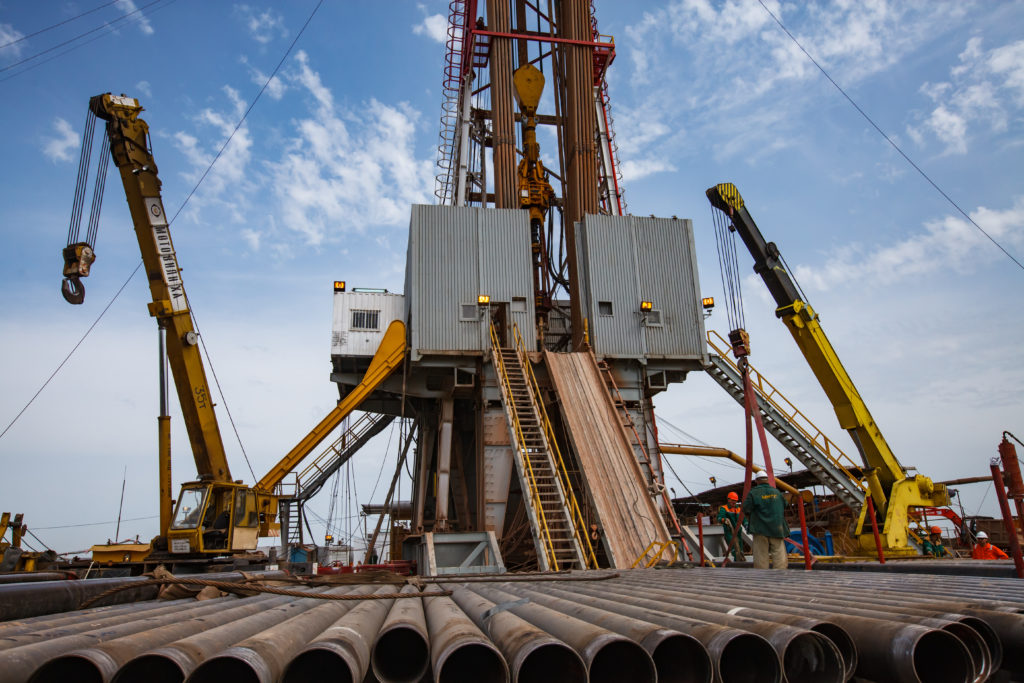
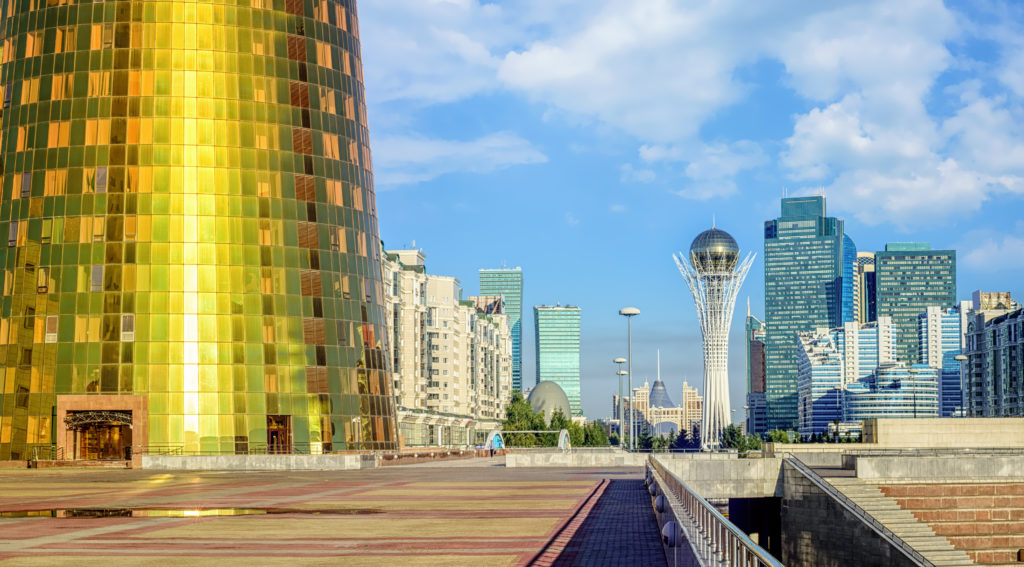
Finally, having attracted bitcoin producers from all over the world in recent years, it remains today a stronghold of cryptocurrency mining, despite the drawbacks of such production - increasingly frequent power outages in the country[11].
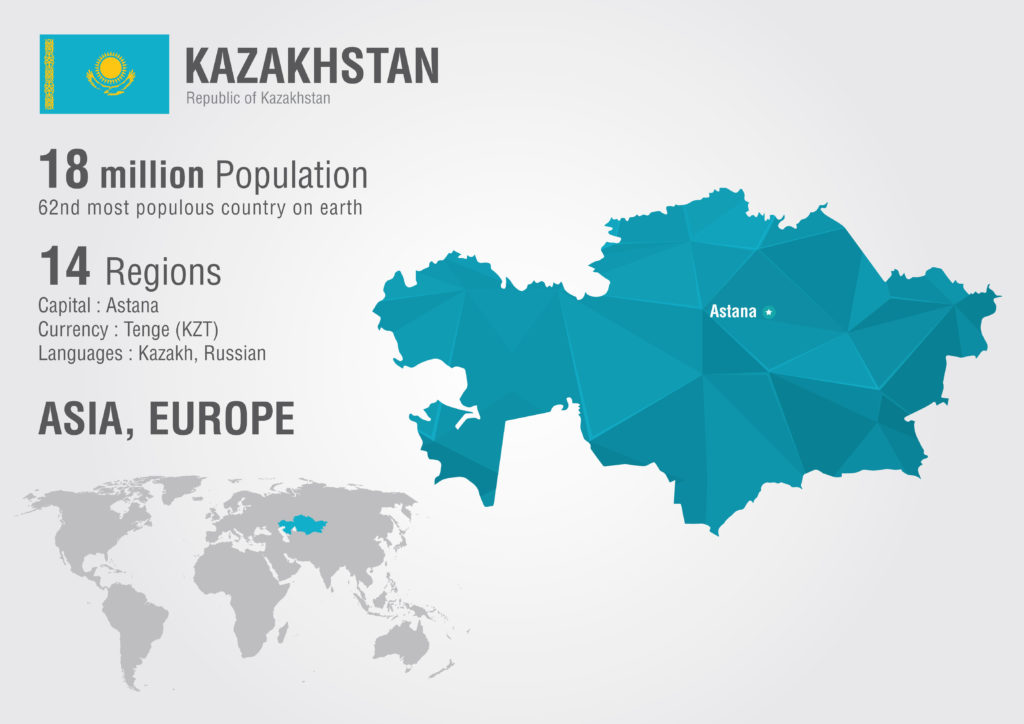
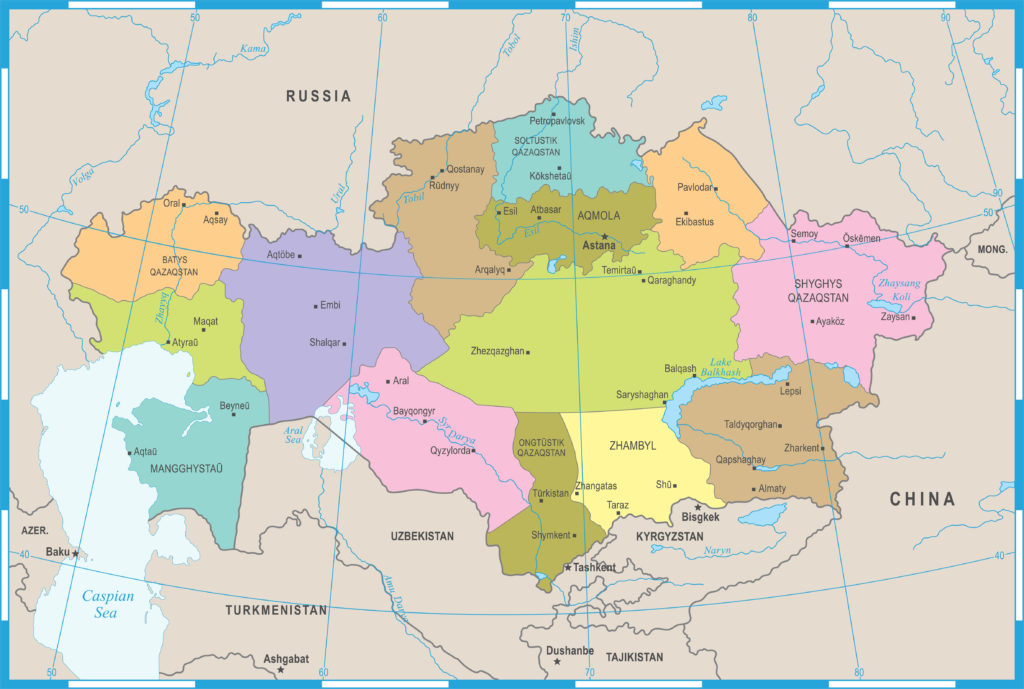
Apart from its significant mining and energy assets, it is Kazakhstan's geostrategic position that explains the causes and course of recent events, namely the popular riots and external interventions. Indeed, at a time when a historic diplomatic crisis between Ukraine, Russia and the US-EU could lead to an armed conflict, it is embarrassing to have a valuable neighbour become an unstable partner.
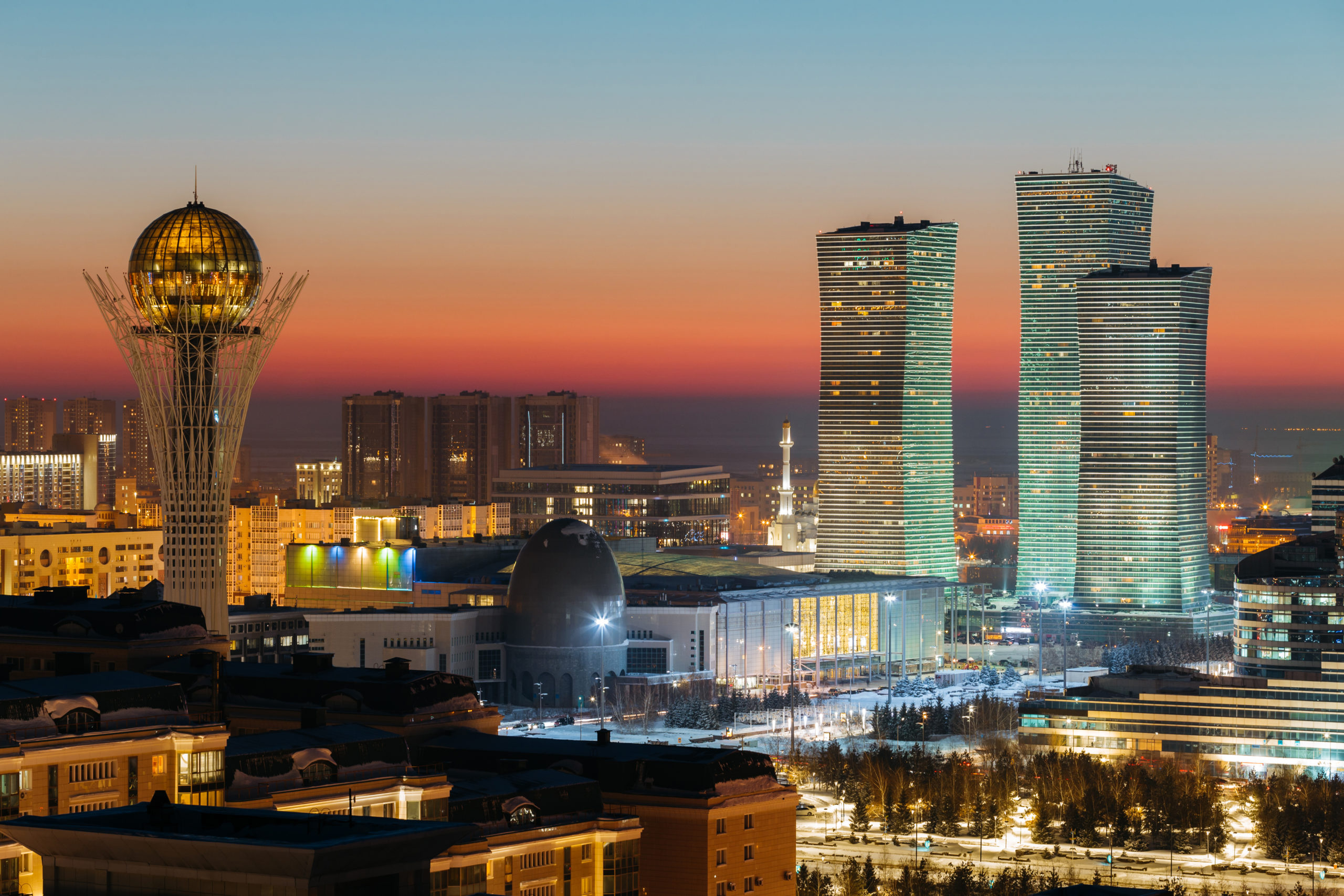
All rights reserved by BRAUN
After the Balkan route, a new migratory route to Western Europe is becoming a concern: the one from Belarus.
Since the summer of 2021, Lithuanian, Latvian and Polish border guards have witnessed an ever-increasing influx of migrants crossing their borders illegally[1]. According to the authorities of the three EU member states, the majority of migrants come from the Middle East (Iraq, Syria, Yemen) and sub-Saharan Africa, and arrive in Belarus by plane, either from Moscow or from the Middle East, at prices approaching thousands of dollars, with the help of Belarusian travel agencies and visa-issuing authorities[2].
European countries denounce these practices as a "hybrid war" orchestrated by Minsk, aimed at destabilising the EU. This is in response to the EU sanctions put in place after the 2020 election protests were suppressed by the police, and the hijacking of the Athens-Vilnius Ryanair flight to Minsk in May 2021[3].
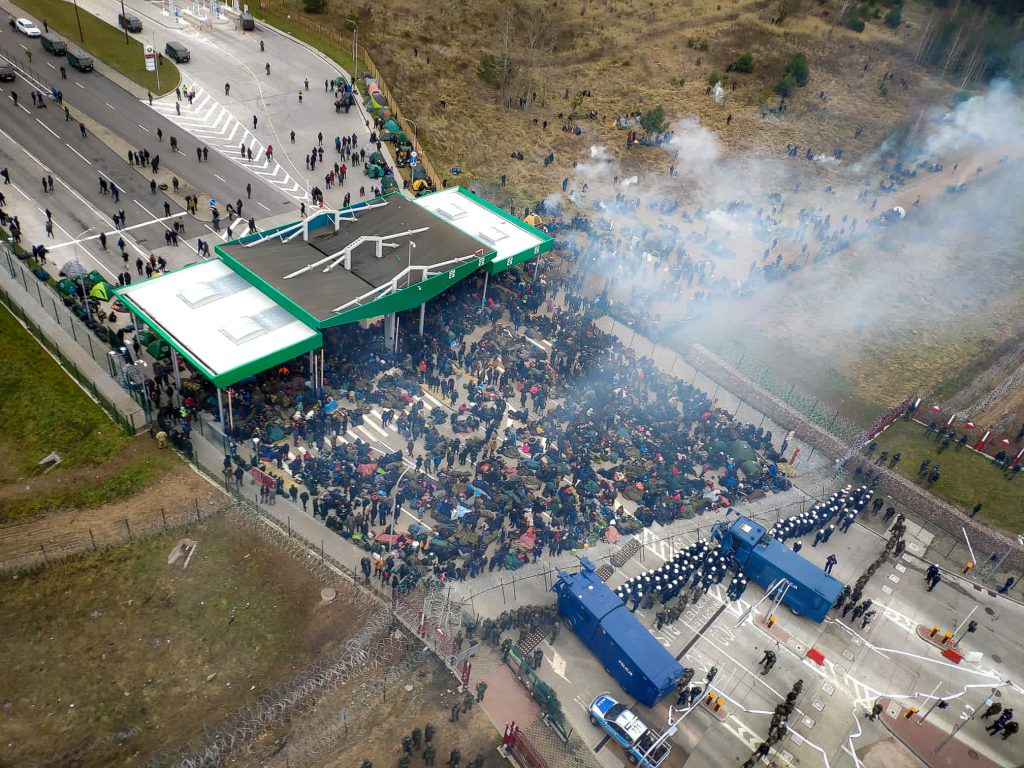
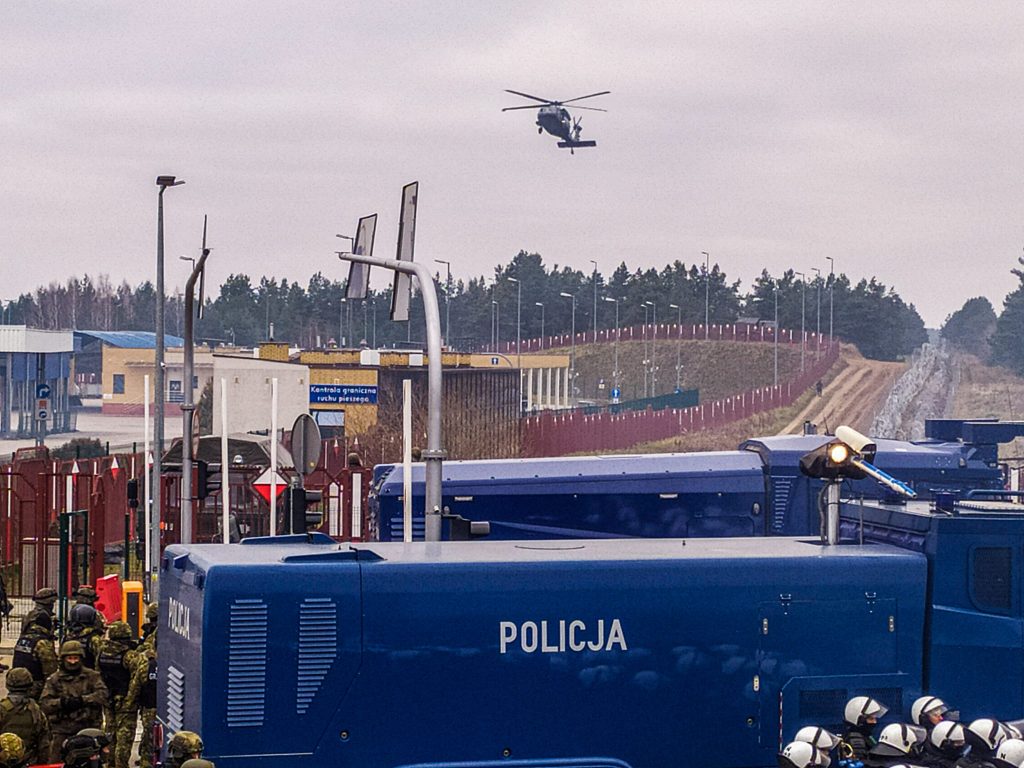
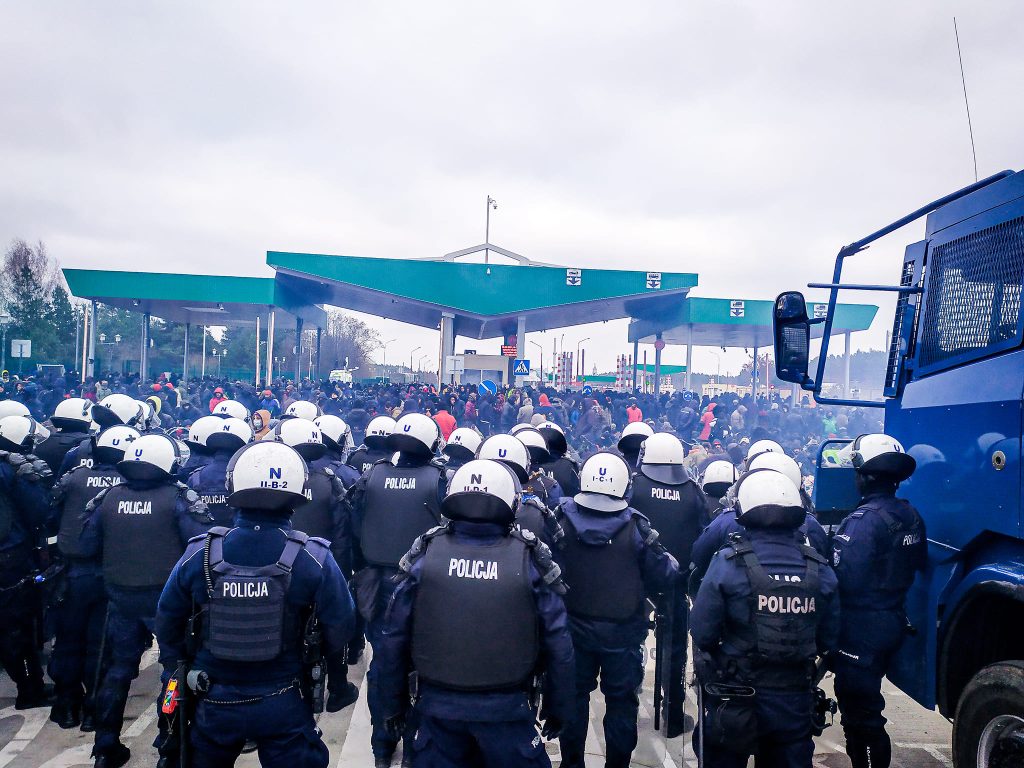
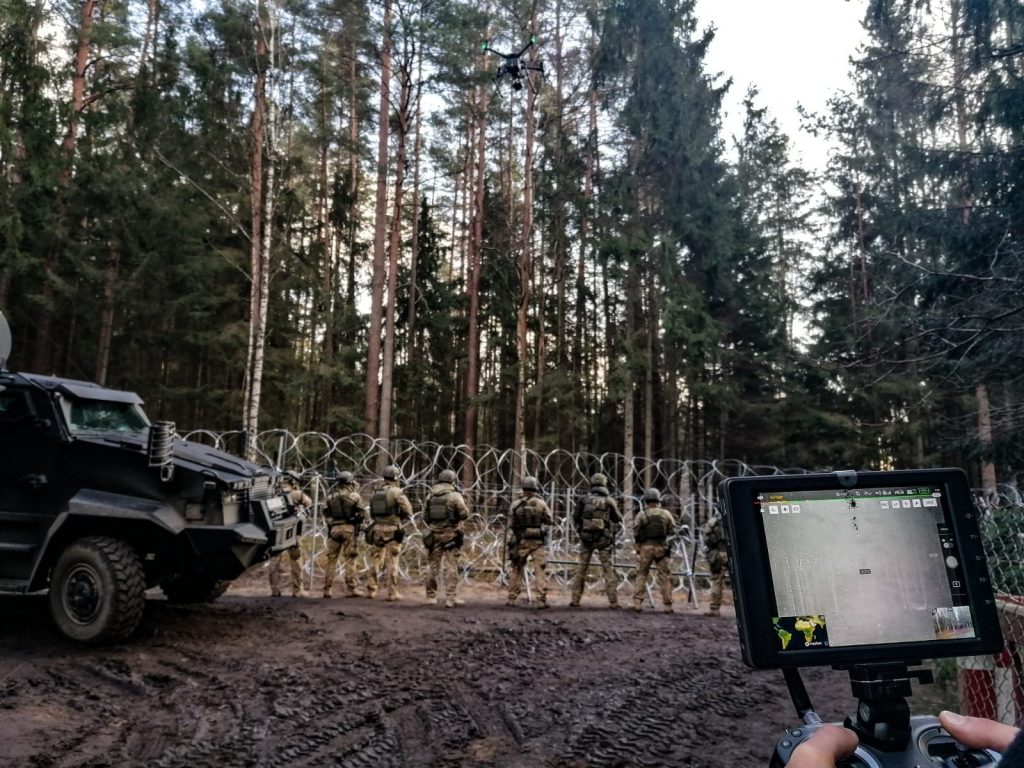





In order to protect the EU's external borders and contain these migratory flows, Latvia and Lithuania have declared a state of emergency, and begun work on building walls along their borders with Belarus[4]. As regards Poland, in addition to the state of emergency declared in all border municipalities with Belarus, the authorities have reinforced the fences, as well as the police and military presence along the border line (418 km)[5]. Recently, like Latvia and Lithuania, Poland has approved the construction of a wall, which will start in December 2021[6].
There is also military support from abroad, such as from Great Britain, which sent a team of 10 soldiers to support their colleagues in reconnaissance[7]. Other European countries, such as the Czech Republic and Lithuania, have recently offered assistance to Poland[8].
Belarus' neighbours have diplomatic means at their disposal to try to alleviate this migration crisis. NATO, the USA and the three Baltic states (Lithuania, Latvia and Estonia) have expressed their support for Poland[9]. Humanitarian aid for migrants remaining on Belarusian territory has been offered by the governments of Poland and the Baltic States[10].


The migration crisis is also part of a purely geopolitical context.
Since the disputed 2020 elections, EU-Belarus relations have deteriorated, with the implementation of EU sanctions on Belarusian officials[11]. In response, President Lukashenko had decided to stop arresting migrants seeking to enter Europe via Belarusian territory[12]. At the same time, the Belarusian and Russian military forces had organised several military exercises along the border with Poland and Lithuania, such as ZAPAD[13]. A new surprise exercise took place shortly before the 15-16 November 2021 clashes at the Kuźnica border crossing[14]. Numerous witnesses from the border guards reported the presence of Belarusian or even Russian commandos among the migrants, who were held as civilians[15]. In several border locations, Polish police and military personnel were attacked in a variety of ways: destruction of fences, throwing of projectiles, use of blinding lasers[16]etc.
Behind the migration crisis, we are witnessing more than ever to disinformation and political and media pressure[17]. The media are becoming increasingly anti-Polish, as demonstrated once again by the case of presenter Azarionok on the national channel CTV, the Belarusian equivalent of the French TF1 or the Belgian RTBF/VRT[18].
The incidents on the Polish-Belarusian border thus represent not only a migration crisis, but also a new geostrategic front between Russia and Europe.



© 2022 All rights reserved by BRAUN
After Russia and China, a new regional player is increasingly imposing itself in Africa: Turkey. Indeed, since the 2000s and on the basis of a 1998 governmental action plan, Turkish economic, infrastructural, military and cultural investments have multiplied throughout the continent, well beyond the traditional zones of influence such as the Mediterranean and the Red Sea[1].
Turkish authorities and companies have observed a great potential in the African market and have multiplied contacts with it, through several meetings and initiatives.
For example, the "Year of Africa" (2005), declared in Ankara[2].
Indeed, in January 2008, the African Union declared Turkey a strategic partner for Africa[3]. In the same year, the first international meeting on Turkey-Africa cooperation took place in Istanbul, marked by bilateral discussions with forty-two state representatives[4]. It follows other summits held in the same city, such as the Turkey-Africa Partnership Summit (2005), which was followed by several others, such as the one held in Malabo (Equatorial Guinea) in 2014[5].
The Turkish investment strategy in Africa is based on three pillars: (1) the deployment of embassies on the continent (today there are 43, whereas there were only nine in 2003); (2) the opening of Turkish Airlines routes, which serve some fifty African cities; and (3) the action of the TIKA agency, which finances numerous projects in the fields of construction, health, agriculture, etc.[6]. The Turkish International Cooperation and Development Agency (TIKA) has 30 coordination centres across the continent[7].
In addition to TIKA, there are other bodies involved such as the Council for Foreign Economic Relations (DEIK), which is responsible for the international relations of the Turkish private sector, and the Confederation of Turkish Businessmen and Industrialists (TUSKON), which brings together almost thirty thousand companies and one hundred and fifty local traders' organisations[8].
Current Turkish investments include the largest arena in East Africa in Rwanda (Kigali Arena), a national mosque in Ghana, a military base in Somalia (TURKSOM), as well as a 400 km railway project linking Ethiopia to the port of Djibouti (Awash-Weldiya)[9]. In Senegal, Turkish companies are working on the construction of a new city near Dakar as well as a railway line. They have even been awarded the management of the new Dakar International Airport, which opened in 2017.[10].
Turkish companies are also investing in natural resources, hydrocarbons, agriculture and industry[11]. Like Nigeria and Somalia, Angola is coveted for its gas and mineral deposits[12].
Arms sales (military attack drones) are also flourishing, such as in Nigeria, which is plagued by Boko Haram[13]. Even with neighbouring Niger, Turkey had signed a defence agreement in July 2020[14]. The country is also expanding its cooperation in the educational and socio-cultural sectors[15].
Finally, Turkey is still investing in the food sector: Africa accounts for 10 % of Turkey's agricultural and food sales in the world[16].
According to statistics, Ankara's trade volume with the African continent has increased from 5.4 billion $ in 2003 to over 25 billion $ in 2020[17]. The Spanish Institute for Foreign Trade (ICEX) has indicated that Turkey has already concluded ten free trade agreements - involving the elimination of tariffs and taxes on trade in goods and services between Turkey and its partners - with the African countries: Egypt, Morocco, Tunisia, Ivory Coast, Ghana, Somalia, Rwanda, Mozambique, Mauritius and Sudan (in the process of ratification)[18]. Other negotiations are currently underway with the Democratic Republic of Congo, Seychelles, Cameroon, Chad, Libya and Djibouti. Turkey is also exploring free trade agreements with Algeria and South Africa.[19].
Turkish investments are promoted and supported through multiple ministerial and presidential visits to African countries[20]. As prime minister and current president, Erdogan has visited 30 African countries since 2004[21]. Recently, he visited Angola, Nigeria and Togo from 17 to 21 October 2021[22]. A mini-summit was also held on 19 October in Lomé, between Erdogan and his Togolese, Burkinabe and Liberian counterparts[23].
Conversely, African leaders and entrepreneurs are working to better reach the Turkish market and to cooperate more with Turkish companies as alternative players to Europe[24]. For this reason, the African Investment Forum in Turkey, organised in June 2021[25]and in October 2021 in Istanbul the 3rd Africa-Turkey Economic Forum (Turkey-Africa Business Summit), in which some thirty African ministers participated[26]. A third Turkey-Africa summit is planned for December 2021[27].
Future investments remain mainly economic, energy, infrastructure, but also focus on culture, religious affairs and the medical field.
To date, aid for the supply of medical devices and equipment has been provided to 44 African countries[28]. Hospitals have been inaugurated by Turkish investors, including two in the Sahel countries; one in Bamako (Mali) and the other in Niamey (Niger)[29].
In the Sahel, Turkish companies are working on the construction of a mosque for the High Islamic Council of Mali in Bamako, as well as on the restoration of the Great Mosque of Agadez in the Nigerian Sahara[30]. In Senegal, mosques are also financed by Turkey[31]. Even the Red Sea countries remain in the crosshairs; this is the case of Sudan with the port of Suakin - located just opposite the port of Jeddah (Saudi Arabia) -, today managed by Ankara thanks to a long lease granted by Khartoum[32]. In addition to restoring the architectural and historical heritage of the site, Ankara aims to make Suakin a new tourist and transit area for Muslim pilgrims[33].
Education continues to be an important part of Turkish-African relations, with the participation of the Diyanet (Presidency of Religious Affairs), the Maarif Foundation (TMV) and the Yunus Emre Institute (YEE)[34]. Like Erasmus in Europe, the Maarif Foundation has an International Programme, as well as an Early Childhood Education Programme[35]. Then, following the example of the European language institutes (Goethe for German, Cervantes for Spanish), Turkey has the Yunus Emre Institute which organises work on teaching the Turkish language to foreigners in centres founded abroad. It also contributes to scientific work, and runs cultural and artistic activities with the aim of representing the country itself[36]. Today, there is a network of Turkish schools and high schools in African countries, namely in Nigeria, Kenya, Ghana, South Africa, with plans to expand to Angola, Zambia, Zimbabwe and Mauritius[37].
Turkish investments in Africa represent a competition for Europe in general, but also economically for China and militarily for Russia[38].
Moreover, other regional players such as India, Japan and Brazil are trying to enter the African market more deeply[39]. At a meeting of the Turkish-Angolan Joint Economic Committee, Turkish Minister of Energy and Natural Resources Fatih Dönmez reported that the value of Turkish investments in the African continent reached 6 billion dollars, and that the number of projects implemented by Turkish entrepreneurs in Africa had reached 1,500, stressing that the economic volume of these projects exceeded 70 billion dollars[40].
© 2022 All rights reserved by BRAUN
In the media, whether in advertisements, news reports or television news, one particular topic is frequently discussed: green energy. Indeed, with natural disasters such as the floods in Germany and Belgium (July 2021) or the forest fires around the Mediterranean (August 2021), more and more politicians are raising the climate emergency[1]They also insist on a progressive use of green energy, in particular renewable energy (photovoltaic panels, wind turbines) and electric cars[2].
It is interesting to note that among the materials used for this alternative energy are rare earths, a group of 17 chemical elements (scandium, yttrium and the 15 lanthanides) which have become an essential element for many high-tech industries (notably the military) and low-carbon technologies (wind turbine magnets)[3]. They are actually used in the digital field, for example indium for touch screens, as well as neodymium, gallium, dysprosium and praseodymium for photovoltaic panels, wind turbines and electric cars[4].

The properties of these rare earths (high thermal stability, high electrical conductivity, strong magnetism) have enabled significant performance gains for the technologies, while reducing the amount of materials consumed[5].
However, rare earth mine production has almost tripled in 25 years, from 80,000 tonnes in 1995 to 213,000 tonnes in 2019, with China dominating production (62 %), well ahead of the US (12 %) ...and Myanmar (10 %)[6].
China alone produces 85 % of the rare earths consumed in 2019[7].
Regarding the distribution of the reserves counted according to the estimates of the United States Geological Survey (USGS): more than three quarters of these reserves (i.e. up to 120 million tonnes) are held by three countries in the world: China, Brazil and Vietnam[8]. But large reserves also exist in India and Russia[9].
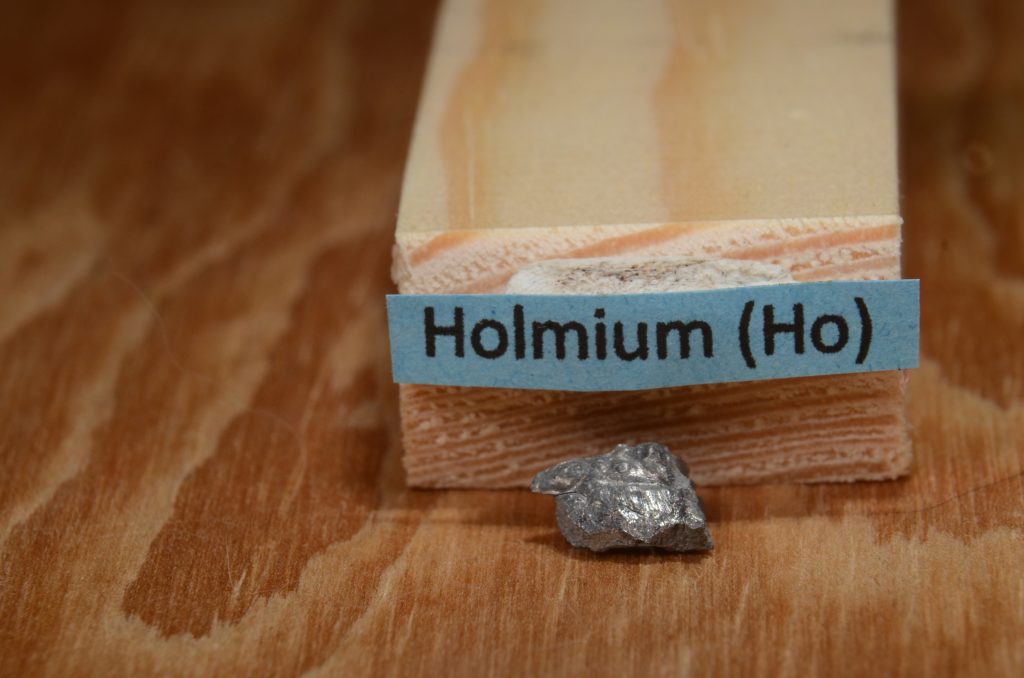


However, the extraction of rare earths has several drawbacks: toxicity of waste, soil and water pollution (groundwater)[10]. Moreover, according to journalist and rare earths specialist Guillaume Pitron, author of the book The Rare Metal Wars (2018), for a single kilo of gallium, also used in low-energy light bulbs, 50 tonnes of rock must be excavated[11]. The Toyota Prius contains 1 kg of neodymium in its engine, in addition to 10 kg of lanthanum in its battery[12]. Concerning wind turbines offshoreThey use direct drive motors and require a permanent magnet alternator; each contains about 600 kg of rare earths (dysprosium and neodymium) per megawatt of power[13].
In addition, there are two other problems, this time concerning the production and export/import of these resources: (1) the geological criticality of rare earths (e.g. their sufficiency to cover future needs), (2) the security of supply of consuming countries, led by the US, Europe and Japan, with regard to geo-economic issues and environmental impacts[14].

Indeed, the US and the EU are working to diversify their sources of supply of rare earths in order to reduce their dependence on China[15]. To achieve this goal, the US re-launched the Mountain Pass mine in March 2021, which has been abandoned since the 2000s, while the EU wants to create an alliance to secure supplies[16]. By the Enviree project funded by the European Commission[17]Europe has also explored another avenue to increase its independence: the recovery of waste from European mines to produce rare earths on its territory.
Also in Europe, on the national side, while focusing on recycling, two large European mining projects are under study (Norra Karr in Sweden and Kvanefjeld in Greenland)[18]. Even in Great Britain, which recently left the EU, the first major rare earths processing plant is being built, precisely in Hull (northern England)[19].
Obviously, rare earths and green energy are an asset for the digital world, but they have gradually become a new diplomatic weapon; as previously with oil between the West, Arab countries and Russia.

This time, it is a new rivalry between China and the West, which has a technological impact on their respective industries (the cases of Huawei, Google and Tesla)[20]. China had already used rare earths as a means of pressure on Japan in 2010, during the tensions in the East China Sea off the Senkaku/Diaoyu Islands, by suspending exports of these metals from China to Japan, which then saw its digital industry temporarily deprived of resources[21].
In 2013, a U.S. Congressional report noted: "China's near monopoly [in rare earth production] risks becoming a threat to national security.[22]. Green energy" therefore means "geopolitical interest".

© 2022 All rights reserved by BRAUN
Since the recognition of the Moroccanity of Western Sahara, in exchange for the re-establishment of diplomatic relations between Morocco and Israel, the official media has again addressed an old regional rivalry: that between Morocco and Algeria[1].
Indeed, the annexation of Western Sahara by Morocco after the departure of the Spaniards in 1975 led to the advent of the Polisario Front (Spanish abbreviation for Popular Front for the Liberation of Saguia el-Hamra and Rio de Oro), which demanded the independence of this former Spanish colony[2]. However, Algeria had recognised the Sahrawi Arab Democratic Republic (SADR), and this had led to a diplomatic rupture with its Moroccan neighbour from 1976 until 1988[3]. During the same period, from 1975 to 1991, a war broke out between Morocco and the Algerian-backed Polisario Front. It ended with a ceasefire[4].
Nevertheless, the rivalries between Algeria and Morocco never disappeared and nowadays, their contacts remain generally reduced[5]. First, the land borders have been closed since 1994, then, since the end of August 2021, Algerian airspace has been closed to Moroccan planes, and since September 2021, diplomatic relations have been broken off[6]. Moreover, unlike Morocco, Algeria has never established relations with Israel, and remains one of the most mobilised states in the world for the Palestinian cause[7].

Secondly, the government in Algiers still hosts the Saharawi refugee camps in the city of Tindouf, as well as the headquarters of the Polisario Front[8]. In November 2020, the abrogation of the ceasefire by the Polisario Front led to a resurgence of tensions in the region: Saharawi exchanges of fire with Moroccan forces and drone strikes that led to the death of three Algerian drivers[9].
However, behind the Algerian-Moroccan tensions are important political and military struggles for influence[10]. Traditionally, Morocco, as a 'major non-NATO ally' (since 2004), is mainly supplied with Western armaments (France, USA), while Algeria is supplied militarily by Russia and China[11]. In terms of tanks, Algeria has between 1,300 and 2,000 modern tanks of the T72 M1M or AG and T-90SA types, while Morocco has 700 tanks and will reach, with the delivery of the Abrams tank contract, around 1,000 tanks.[12].
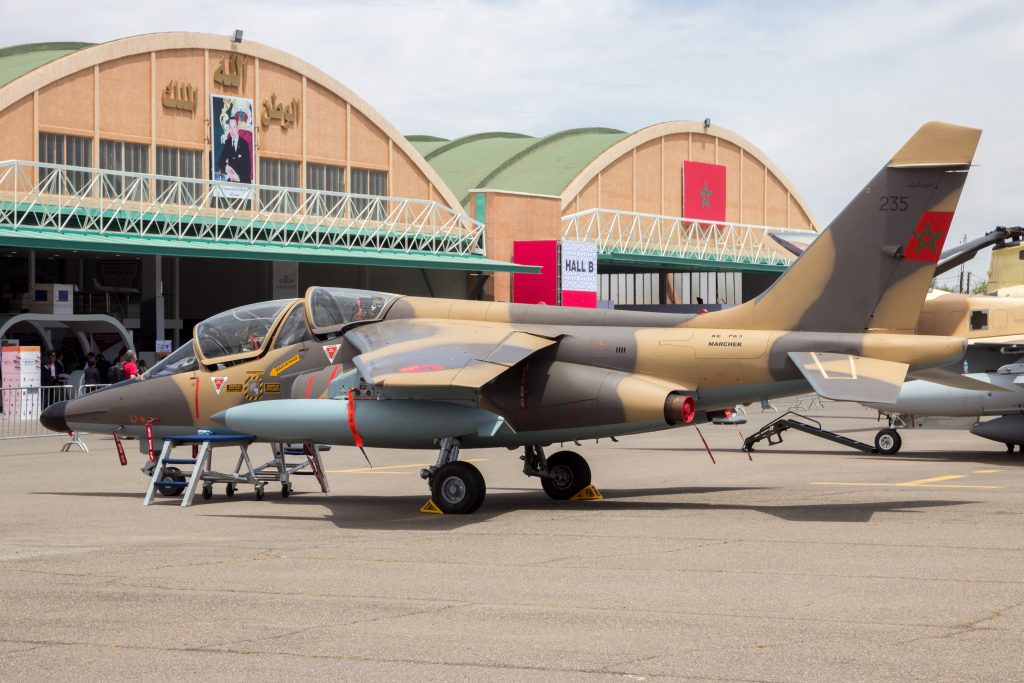

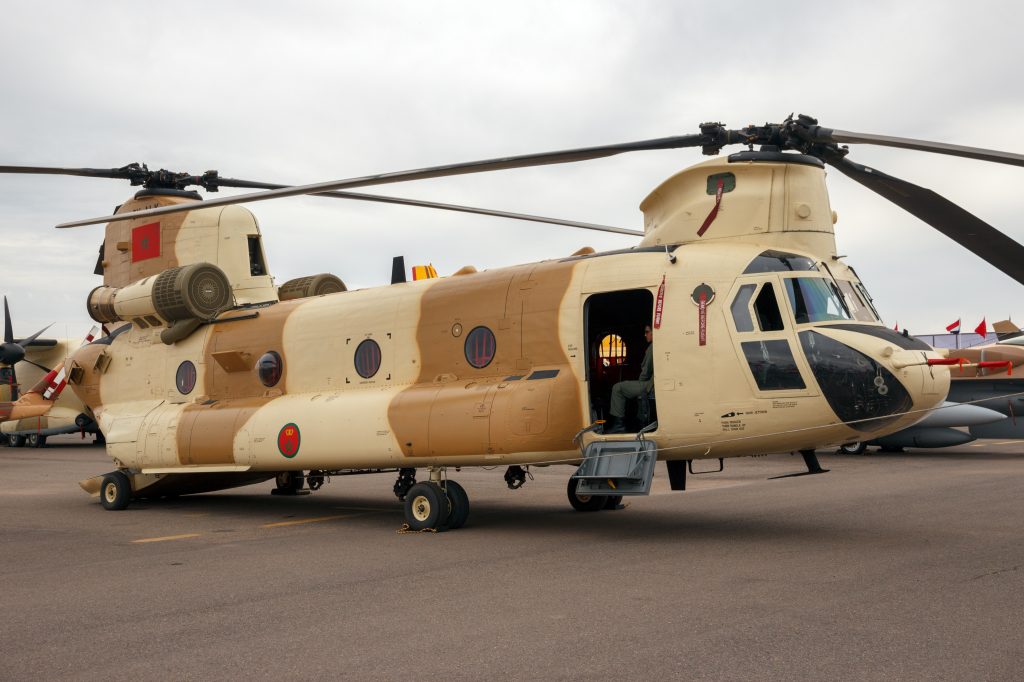
Concerning air capabilities, Algeria is expected to be the first customer for the new Russian Sukhoi 57 fighter planes "which have never been sold for export before".[13]. Morocco has 73 light fighter/bombers, the most recent of which are the 23 F16s recently acquired. Algeria, for its part, has a modern fleet of 58 Sukhoi 30 MKA multi-role fighters, some 15 MiG29S and some 40 Su24 bombers.[14]. Finally, for the ground-air defence system, Morocco has American Patriot systems, while Algeria has the Russian equivalent with the S-300 system[15].
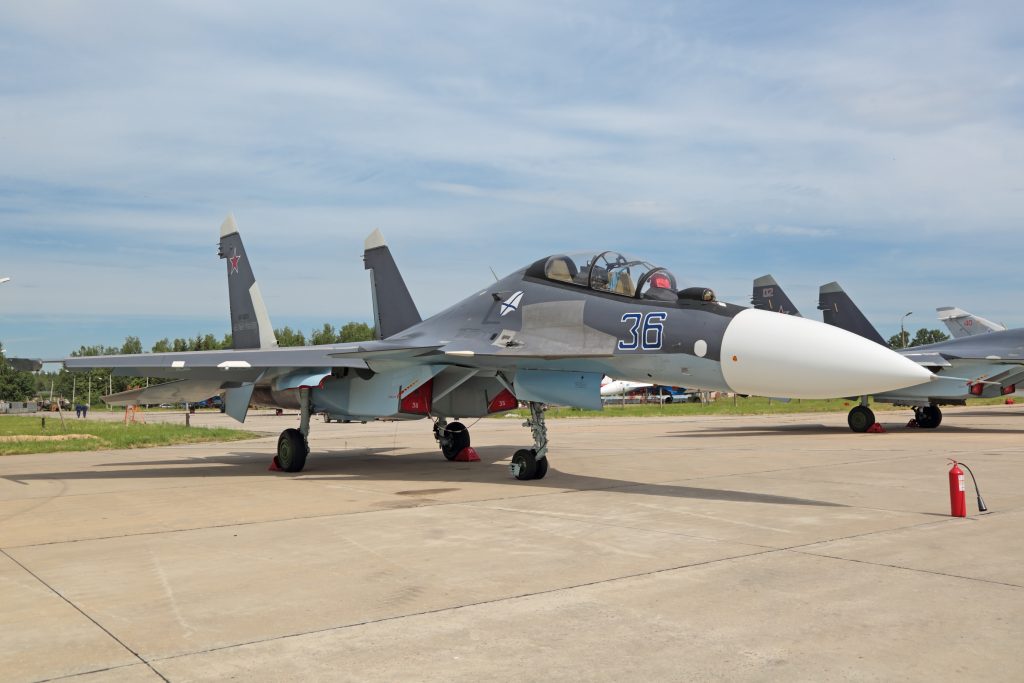
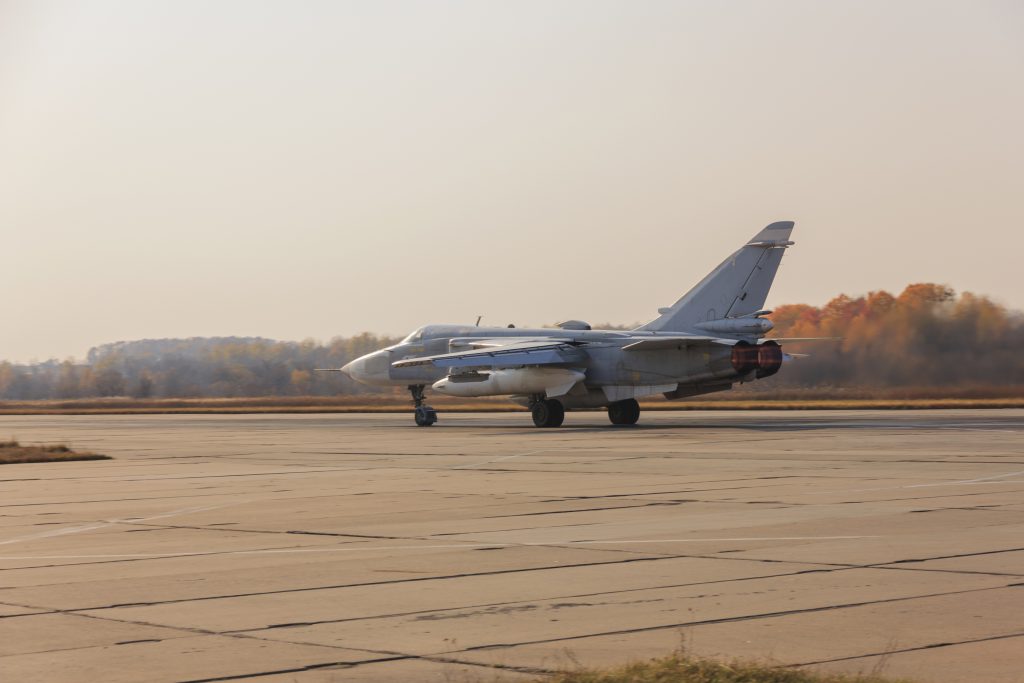
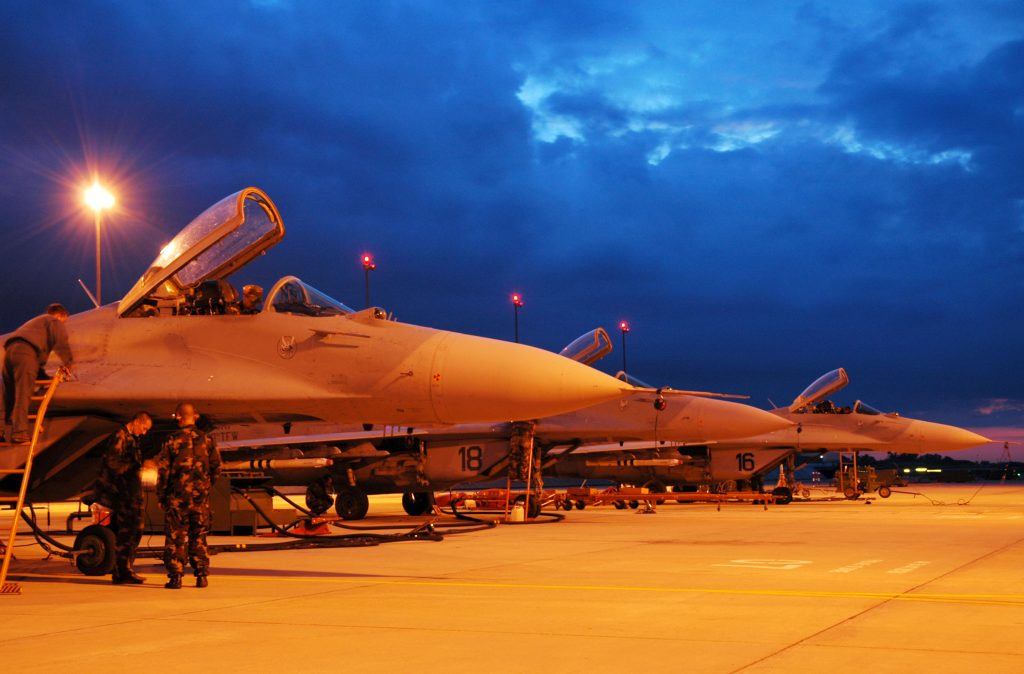
More than ever, military spending in both countries is increasing year on year. In 2018 alone, they accounted for 61 % of arms imports into Africa[16].
According to statistical data from the Stockholm International Peace Research Institute (SIPRI), Algeria spent more than $10.33 billion in 2019 ($9.7 in 2020) on arms purchases[17]. According to SIPRI, it is the country that spent the most in Africa (more than a quarter of African spending), followed by Morocco with 3.76 billion dollars (4.8 in 2020)[18].
In Morocco, the 2022 draft finance law foresees a historic increase in the military budget, mainly dedicated to the acquisition of arms and the reinforcement of the Moroccan armed forces' personnel, which should rise from 4.295 billion euros in 2021 to 4.8 billion euros in 2022[19]. For its part, the Algerian Ministry of National Defence will have an overall budget of 1,300 billion dinars, or 9.5 billion dollars (8.35 billion euros).[20]. Compared to previous years, Algeria has increased its military budget by almost 80 billion dinars, the equivalent of $590 million (about '519 million)[21].
Morocco and Algeria continue to maintain the tradition of investing massively in the military domain, with a view to leadership not only in the Maghreb, but also in Africa.

© 2022 All rights reserved by BRAUN
Since 2015, in the context of the migration crisis in Europe, a new regional actor has been making a name for itself: the Visegrád Group.
Founded in the eponymous Hungarian town after the end of the Cold War in 1991, this inter-governmental organisation of the four Central European countries of Poland, the Czech Republic, Slovakia and Hungary has formed a close political and economic cooperation to better defend the common interests of the member countries at the European level.[1].
At the time, the four countries aspired to overcome their historical differences, as well as to establish and promote economic, political and cultural interests, through the desire and the work of joining the European Union or NATO[2]. One of the initial objectives of the Visegrád Group was to stimulate trade between the signatory countries. To achieve and maintain this, the Heads of State and Government signed the Central European Free Trade Agreement (CEFTA) in Krakow on 21 December 1991, which came into force on 1 March 1993.[3]. Set up gradually over 5 years, and successively enlarged to include the countries of South-Eastern Europe (Romania, Bulgaria, Slovenia, Croatia), CEFTA was conceived as a transitional organisation preparing for full membership of the European Union [4]. This was achieved through its enlargements in 2004, 2007 and 2013. However, the organisation has not completely disappeared: CEFTA's members still include all the non-EU Western Balkan countries (Serbia, Bosnia and Herzegovina, Montenegro, Albania, Northern Macedonia and Kosovo) as well as Moldova[5].
Even after joining the European Union, the V4 Member States continued their efforts to speak with one voice in the EU[6]. Like the Council of the European Union, the Visegrád Group is led by a rotating presidency that lasts one year[7].
Now under the Hungarian Presidency (2021-2022), the group continues to establish special links with other regional organisations such as the Benelux, as well as to broaden the scope of their cooperation in the fields of energy, tourism and/or justice[8].
Over the years, the group has organised summits with non-European countries, such as France, Austria, Bulgaria, Croatia, Romania, Slovenia and Lithuania, as well as the Nordic Council countries (Scandinavian countries, Finland and Iceland)[9]. Even countries such as Egypt, Israel and the United States were invited[10]. On the occasion of the club's 30th anniversary, celebrated in Poland, the President of the European Council, Charles Michel, was also invited[11]. The leaders declared the fight against Covid-19, migration and climate issues as priorities for the group, followed by the EU's foreign and neighbourhood policies with countries such as Russia, and those of the Eastern Partnership launched in 2009 by Poland and Sweden, and including Belarus, Moldova, Ukraine and the three countries of the South Caucasus (Armenia, Azerbaijan, Georgia)[12]. As the last but one Polish Presidency in 2020-2021 stated: the Eastern Partnership remains one of the priorities of the Visegrád Group[13].
As a 'sovereignist club', the Visegrád Group remains an important partner in the European sphere, alongside other European regional cooperations such as the 'Med 7', composed of the Mediterranean EU member states - France, Italy, Spain, Portugal, Greece, Cyprus and Malta - and the New Hanseatic League in the north - made up of the Baltic states, Scandinavia (except Norway), the Netherlands, Finland and Ireland[14]. Even the current Slovenian Presidency of the EU Council maintains close links with the Visegrád Group[15]. For the latter, apart from the economic recovery after the Covid-19 crisis, as well as support for the accession of the Western Balkan countries to the EU, the Visegrád group still remains an important partner in solving the migration crisis caused, among other things, by the Western military disengagement (partial or not) in Mali and Afghanistan, and in the surveillance of the borders of both the Schengen area and the European Union[16].
© 2022 All rights reserved by BRAUN
Dushanbe, capital of Tajikistan, 2021. The member countries of the SCO (Shanghai Cooperation Organisation) have accepted Iran's membership[1]. As the ninth member state of the military organisation, which includes not only Russia and China, but also India, Pakistan and the countries of Central Asia (with the exception of Turkmenistan and Afghanistan), Iran increases its position and that of the Sino-Russian alliance in the Middle East[2]. In addition, Iran is one of the transit countries of the new Silk Roads, which link China to Europe via Central Asia, Russia and the Middle East[3]. Secondly, Iran had recently participated in several naval exercises in the Indian Ocean with Russia and China[4].
The current Western sanctions on Iran have strengthened Tehran's relations with Asia, to the detriment of European countries that are still working to maintain relations with Iran[5]. Unlike the United States and Canada, European countries still have diplomatic missions in Tehran and have not completely severed their trade relations, despite the extraterritorial nature of the US sanctions[6]. The recent establishment of the INSTEX mechanism by France, Germany and Great Britain is proof of this[7]. Several European countries, including the Benelux countries, Scandinavia and Finland, later joined the mechanism[8].
However, Russia, China and Iran have increased their partnerships, not only military but also economic[9]. Indeed, membership of the SCO also allows Iran to have access to the markets of other member countries and to maintain its energy position in Asia[10]. The SCO countries constitute "not less than 50 % of the world's population and more than 20 % of the world's GDP".[11]. Like the economic partnerships with China[12]Iran has already signed a free trade treaty with the Eurasian Economic Union, comprising Russia, Belarus and Kazakhstan, as well as Armenia and Kyrgyzstan[13]. According to statistics, China remains Iran's largest trading partner (24.8% of total trade for the year 2019-2020)[14]. With regard to trade between Iran and the five countries of the Eurasian Economic Union (EEU), the Iranian authorities have noted an increase of 14% in the first seven months of the year 2020, with a total volume of at least 7 million tonnes and a total value of around $2.5 billion[15].
Despite the American and European sanctions, Iranian oil exports have not stopped and the efforts of the Gulf Arab countries (Saudi Arabia) to compensate for the effects of the Western sanctions on oil imports in certain countries by increasing oil production have encountered numerous limits and obstacles, such as the consequences of the Yemeni conflict on the security of oil infrastructures (sabotage, drone attacks)[16]. Even Qatar had maintained its relations with Iran during the 2017-2021 embargo, for energy and strategic reasons (gas fields in the Gulf shared with Iran, borders with neighbouring Arab countries closed)[17].
Finally, in response to the American military deployment in Asia and Europe, Russia and China see Iran as a new partner to keep a zone of influence against their Western rivals (United States, NATO,...), as well as to protect their common allies (the case of Syria)[18]. Iran's membership of the SCO only confirms a Russia-China-Iran alliance that will impose itself militarily and economically against the West, not only in the Gulf, but also in the Indian Ocean, the China Sea and even in Europe.
© 2022 All rights reserved by BRAUN
Tehran (IRNA) - The Islamic Revolutionary Guard Corps (IRGC) has released images of the confrontation against an alleged US piracy act targeting an Iranian fuel shipment.
The incident took place on 25 October 2021, but the information and videos were not made public until 3 November.
Here is the statement from the Islamic Republic News Agency (IRNA):
"During this episode, US forces confiscated a tanker carrying a cargo of Iranian oil in the strategic Arabian Sea, transferring its shipment of crude to another vessel.
The IRGC therefore organised a maritime operation against the second ship, landing its helicopters on the deck and diverting the ship to Iranian waters.
The footage shows the incident in detail, first showing the Pashtun naval intelligence command and intelligence gathering network detecting the ship carrying the stolen crude.
The IRGC Navy is then seen sending its rapid reaction units to the area to recover the cargo.
The commandos then embarked on a helicopter operation, which included landing their aircraft on the second ship, disembarking the forces and recovering the stolen cargo.
Meanwhile, IRGC drone units, speedboats and other naval vessels are supporting the operation.
The USS The Sullivans (DDG-68) and the USS Michael Murphy (DDG-112), two American destroyers, were then seen approaching a second tanker to prevent its recovery, but were warned by the Pasdaran Navy.
The relayed images of the operation, meanwhile, show the American ships involved and their crews in vivid detail.
A statement issued by the IRGC's public relations office said that after the helicopter operation, the US forces started to pursue the second ship with the help of several helicopters and warships. However, they stopped before capturing it.
US forces then sent other warships to block the ship carrying the stolen crude.
"The Americans decided not to continue the operation and left the area after they realized that the brave and ardent fighters of the Pasdaran Navy were ready and determined to face any adventurism and threat against the interests of the Iranian nation," the statement added.
Thanking the Corps for the success of the operation, Iranian Oil Minister Javad Owji said that "Iran's enemies" had resorted to piracy once they realised that the Islamic Republic was determined to export its fuel, despite US sanctions against the country."
Source: IRNA
August 2021. The Biden administration signs the end of the American intervention in Afghanistan, after twenty years of presence in the country, suffering war after war since the Soviet invasion (1979)[1]. In response to this disengagement, many regional actors are mobilising to ensure the stability of the state that recently fell to the Taliban[2]. Apart from Russia, Turkey and Qatar for geostrategic reasons (migration crisis, neighbourhood stability, national interests), the countries most involved in the Afghan crisis are Afghanistan's neighbours Iran, Pakistan, the Central Asian countries and China.[3].
Afghanistan's neighbouring country, sharing a common border of 76 km and diplomatically present in the country since 1955[4]China remains more committed than ever to invest in its neighbourhood in general, and had already advanced its pawns at the gates of Afghanistan, notably through the Silk Road (economy, infrastructures) as well as political and military alliances (Iran, Central Asian countries)[5]. Despite the instabilities, Afghanistan is not neglected and remains an object of desire for the Chinese government[6]. Diplomatic efforts and new investment attempts illustrate this very well[7].
In the summer of 2021, numerous meetings in China, specifically in Beijing and Tianjin, were held between Afghan, Taliban and Chinese representatives to ensure the continuation of the Chinese presence in Afghanistan and the Taliban's security commitments, for various reasons[8].
Firstly, Afghanistan is close to the Chinese province of Xinjiang, which has a Muslim majority (Uyghur) and is plagued by both separatism and Islamic terrorism (anti-Chinese attacks)[9].
Secondly, Afghanistan has important natural resources (rare earths, lithium), which are vital both for Chinese industry and for the Taliban in search of economic support[10].
Finally, China is striving to ensure the territorial integrity of the country and the stability of countries in which it has entered into major energy and infrastructure contracts, such as Pakistan[11].
The speeches of Chinese officials, including the chief (Wang Yi) and the diplomatic spokesmen and the ambassador in Kabul (Mr. Cong Peiwu), show that the Beijing government is advancing its position in Afghanistan in a security and economic discourse, and this, in a context of geographical proximity[12]. China is keen to keep Afghanistan within its sphere of influence.
Since the late 2000s, relations between Western countries, Israel and Turkey have become strained for several reasons. Firstly, progress in the negotiations for Turkey's entry into the EU has stalled[1]. Then, the Cypriot question is still unresolved following Turkey's categorical refusal to recognise the Greek side and to withdraw its military troops from the northern (Turkish) part of the island[2]. Finally, Turkey is increasingly turning to Palestine, which is prompting Israel to look to other countries to secure its national interests[3].
As a result of regional tensions, three countries in the Eastern Mediterranean - Greece, Cyprus and Israel - have signed important military and energy alliances[4].
Indeed, various air exercises involving the three countries, including INIOCHOS in April 2021, have taken place in Greece[5]. However, all three countries are also concerned with energy supply[6]. The gas deposits in Cypriot and Israeli waters have provided a unique opportunity not only to secure an alternative supply route to that from Russia and Turkey with the Turkish Stream pipeline, but also to reduce energy dependence on these two countries mentioned above[7]. Indeed, Cyprus, Greece and Israel have recently signed a gas pipeline project (East Med) that would link the gas fields of the Eastern Mediterranean not only to Greece, but also to Italy (!)[8]. In addition, to improve the electricity network, the three countries have resolved to build a submarine cable that would link Israel to Greece via Cyprus[9]. These trilateral projects have attracted the attention of the European Commission, which sees them as beneficial to Europe and its gas and electricity supply[10].
Of course, this alliance and its regional influence are also subject to internal and local constraints. Arab-Israeli tensions and their geopolitical consequences on the international scene have led Greece and Cyprus to maintain separate contacts with certain neighbouring countries, such as Lebanon, Palestine, as well as Egypt and Jordan[11]. However, the Abraham Accords, as well as the PHILIA Forum and the Paphos Summit, gave the Trilateral Alliance the opportunity to increase its geopolitical network in Europe as well as in the Middle East (Gulf Arab countries)[12].
Given their geographical location and potential as an East-West Mediterranean energy corridor, the Greece-Cyprus-Israel alliance can provide the West with a new geopolitical tool, and even become a new key player on the international scene in the Eastern Mediterranean. Indeed, the alliance's initiatives are not only supported by EU member states such as France and Italy, but are also attracting attention and interest on the other side of the Atlantic (USA).[13].
© 2022 All rights reserved by BRAUN